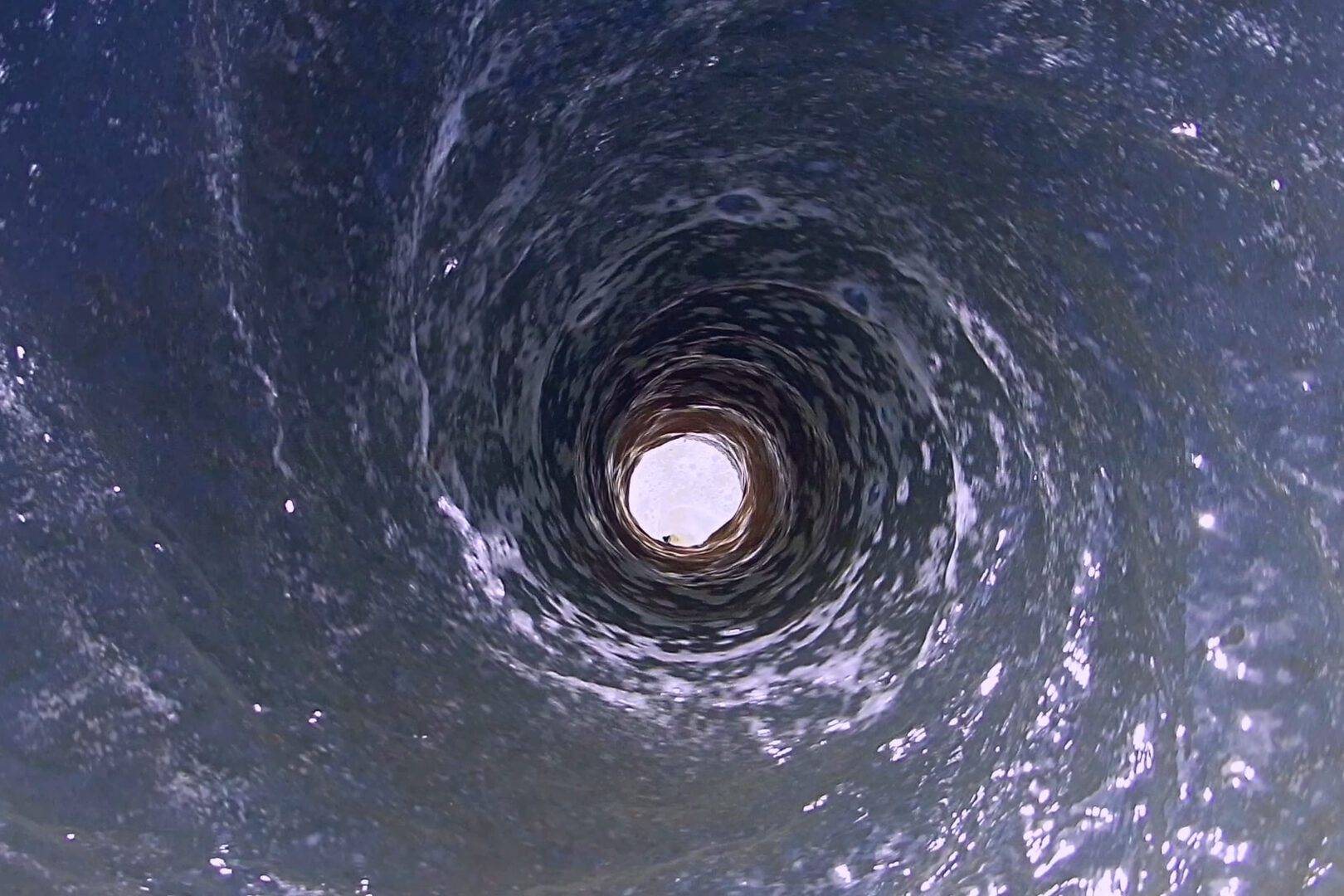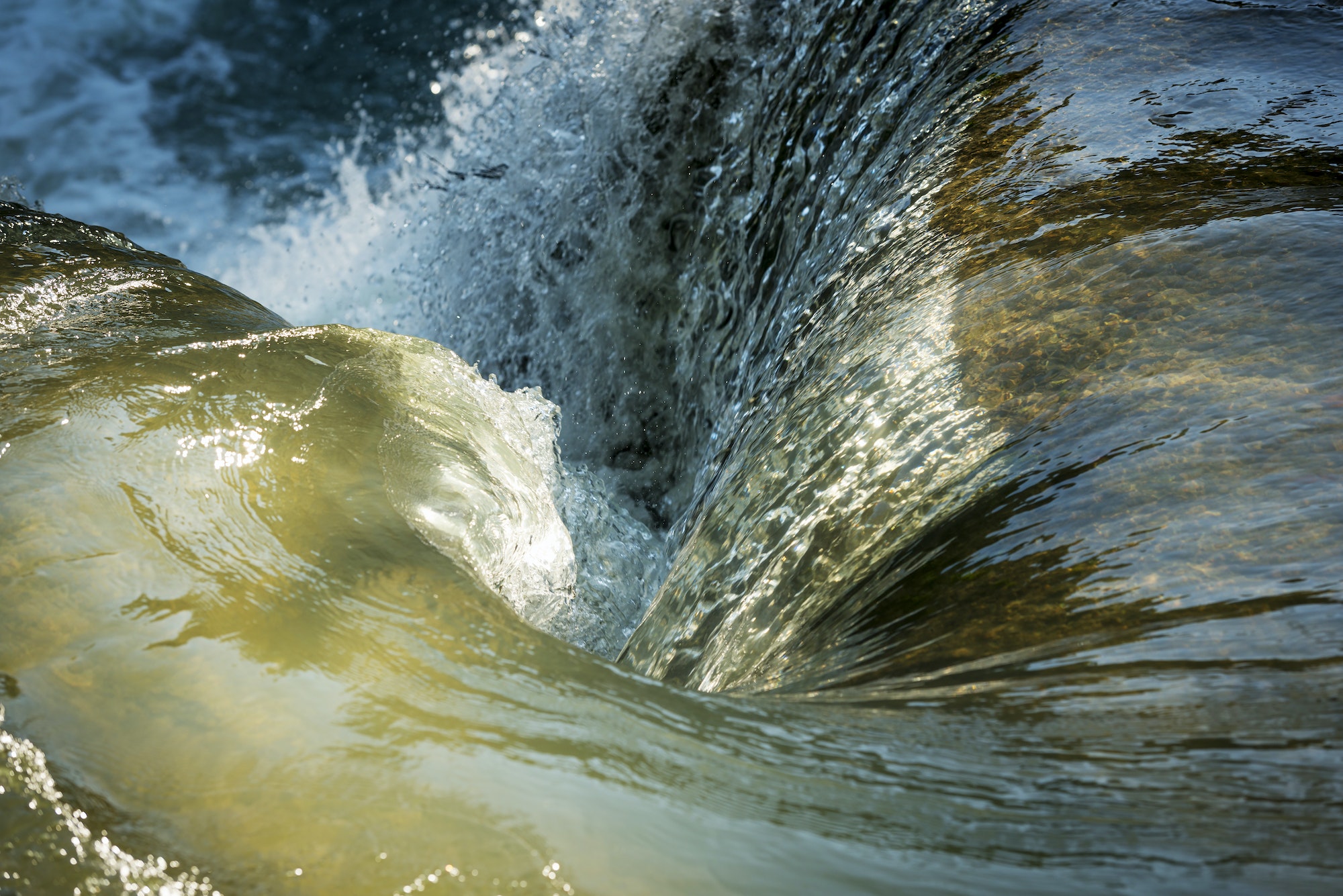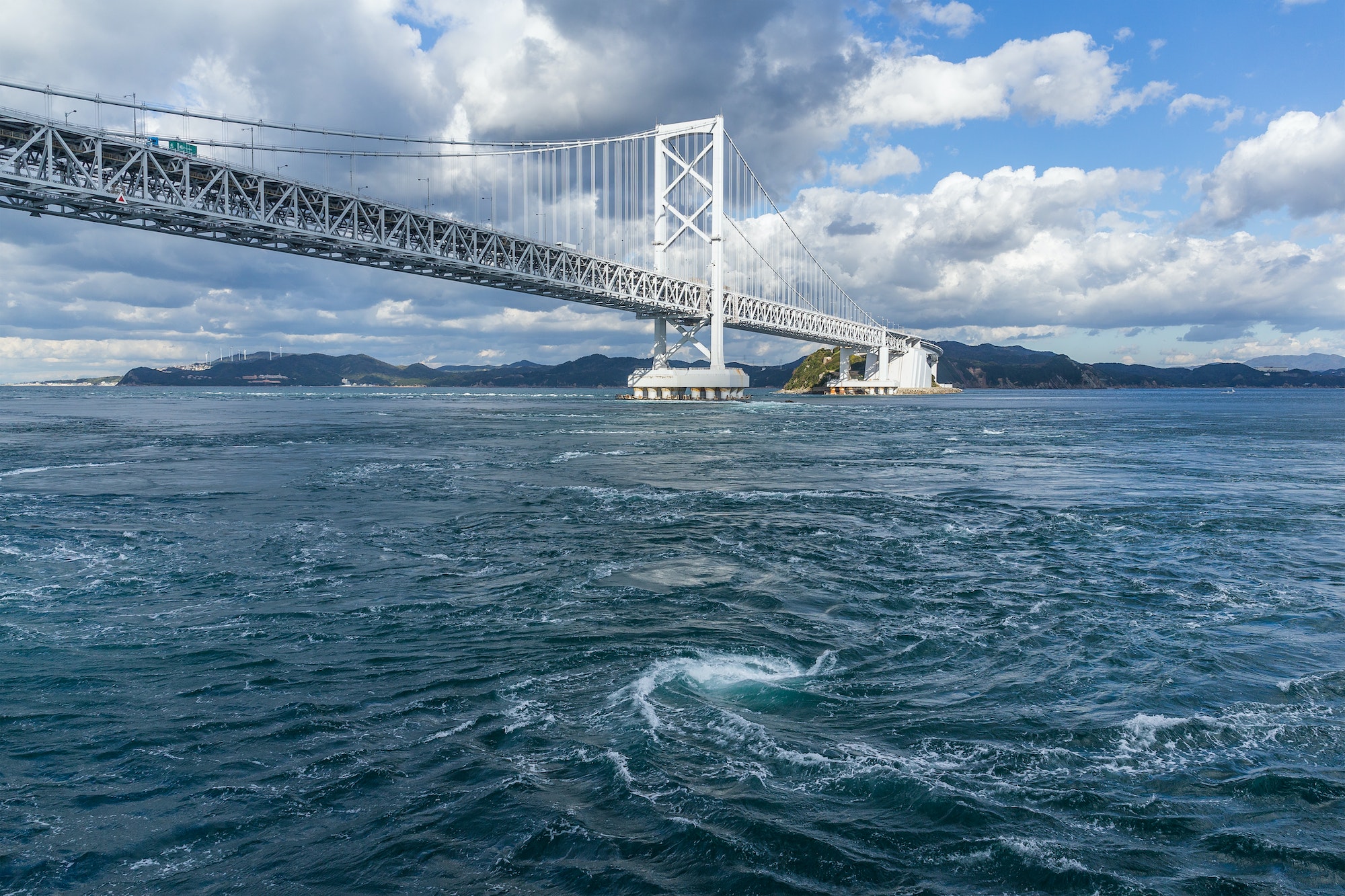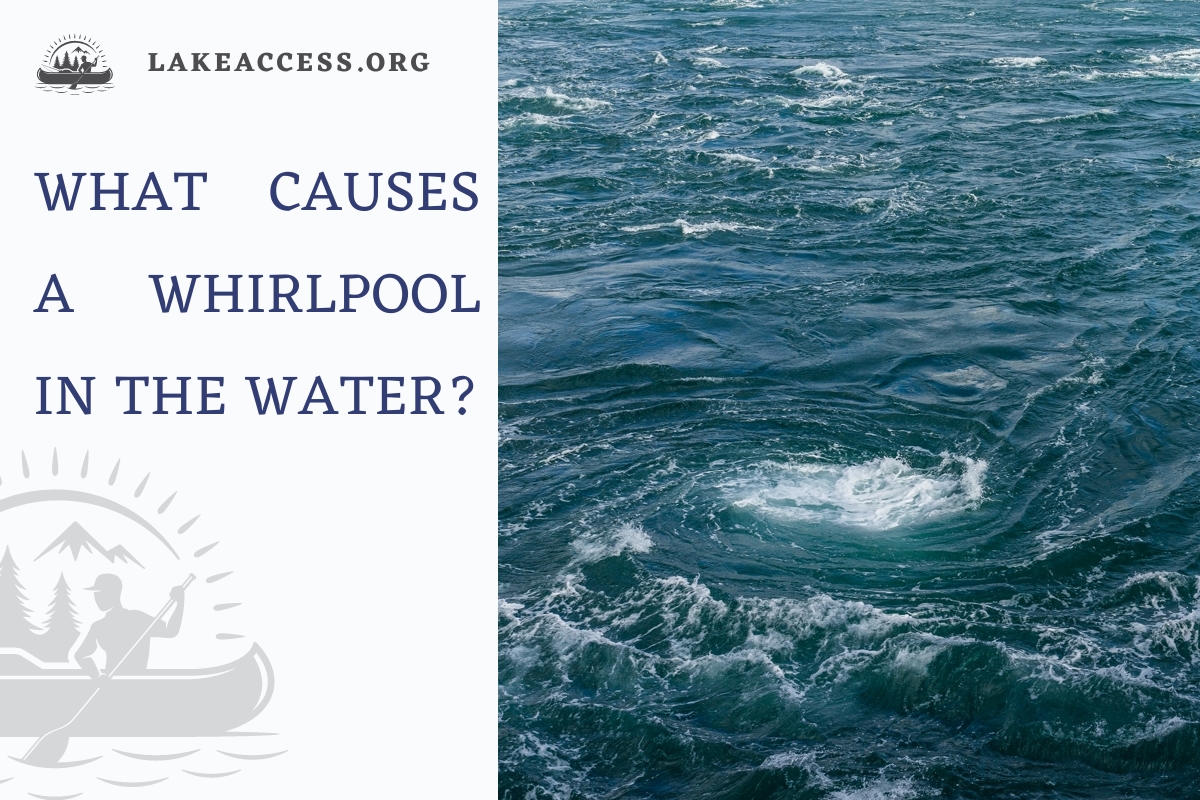Ever observed water as it spirals in a captivating dance, plunging into a tunnel-like formation, and wondered, “What causes this?” This mesmerizing phenomenon, known as a whirlpool, can captivate any onlooker. Though often associated with awe-inspiring tales of sea monsters and maritime lore, the mechanisms behind whirlpools are far from fantastical. They’re a result of real-world physics and intriguing natural factors.
What Is A Whirlpool?
At the most basic level, a whirlpool is a body of swirling water produced by the meeting of opposing currents. The water circulates around a central point, creating a spiral of rotations that can seem quite intimidating. Yet, the phenomenon is a regular occurrence in nature—its scale varying from as minute as your bathroom sink to as colossal as the infamous maelstroms in the open seas.
Types of Whirlpools
The size and intensity of a whirlpool can greatly differ based on the conditions leading to its formation. A whirlpool could be a mere dime-sized vortex emerging as water drains from your sink—a playful mini-twister biding its time before it disappears down the drain. On a much larger scale, you have the impressive marine whirlpools, spanning hundreds of meters across, acting as real-life presentations of nature’s grand theatre. These imposing spectacles form under specific circumstances, largely dependent on a range of environmental conditions.

Formation of Whirlpools: Factors and Mechanics
Now that we understand the basics of whirlpools let’s dive into what causes a whirlpool in the water. Several factors contribute to the creation of a whirlpool, including water currents, tides, and gravity.
Water Flow
Water flow plays a significant role in the emergence of a whirlpool. When water flows into a narrow, constrained space or when two opposing currents meet, spiral movements can occur. As water seeks the path of least resistance, the difference in water speeds causes a swirling motion. This motion is the birth of a whirlpool. Imagine, if you will, an orchestra of water molecules choreographed by the forces of physics, moving gracefully in harmony, creating a visual spectacle—that’s a whirlpool.
Rotation of the Earth
Another intriguing actor in the formation of whirlpools is the Earth’s rotation. The impact of Earth’s spin, known as the Coriolis effect, can influence the direction of the swirling vortex, turning counterclockwise in the Northern Hemisphere and clockwise in the Southern Hemisphere. Like a grand puppet master, the Earth’s rotation adds another layer of intrigue to the already fascinating whirlpool ballet.
Uneven Water Levels
Whenever there are differences in water levels across a narrow pathway, the water tends to rush from the higher point to the lower one. As a result, you have a chaotic rush of water causing turmoil in the currents—perfect conditions for a whirlpool to form. Think about it as spontaneous adventure-seekers skydiving into unchartered territories, descending at high speeds, generating a rush, a thrill—that’s what the water is doing when diving into the lower levels, creating whirlpools in its wake.
Atmospheric Conditions
Weather conditions, including winds and storms, can also contribute to whirlpool formation. Picture the winds as the veritable conductors of a symphony, stirring up the surface water, influencing its currents, and teeing up conditions conducive for whirlpools. Storms can considerably intensify this effect, distressing the water’s surface—almost like a dramatic crescendo in a symphony—resulting in the creation of large whirlpools.

Whirlpools in Different Settings
Whirlpools in Oceans
In the open and vast expanses of the ocean, whirlpools are a sight to behold. The dynamic nature of oceanic waters, coupled with their deep depths, sets the stage for some of the world’s most formidable whirlpools. For instance, the Maelstrom of Saltstraumen in Norway, touted as one of the most powerful whirlpools globally, witnesses water rushing through a 3-km long, 150-meter wide strait at speeds of 37 km/h—almost akin to a wolf sprinting through a meadow—incredibly swift and extraordinarily gripping!
The enormous scale of such marine whirlpools offers an unforgettable spectacle. Given their size and the colossal volume of water they swirl, it’s no surprise that they’ve often been the centerpiece of maritime legends and myths. And yet, as intimidating as they may appear, these oceanic whirlpools contribute significantly to marine ecosystems, helping circulate nutrients and fostering diverse marine life.
Whirlpools in Rivers
While rivers may not match the expansive scale of oceans, they still can host impressive whirlpools. The dynamics differ slightly—instead of tides and vast water bodies, it’s the river’s flow and the landscape that contribute to whirlpool formation.
Consider the famous ‘Sawmill Sink’ in the Alabama River, for instance. The whirlpool it generates is both a fascinating spectacle and a potential hazard for the unaware. Formed by the rushing river waters interacting with underwater structures and geographical features, such whirlpools represent nature’s power in action.
Whirlpools in Lakes
Lakes, calm and serene as they may appear, are not exempt from hosting whirlpools. The combination of lake inflows, outflows, and the body’s depth all contribute to the formation of these intriguing structures.
Due to their typically high levels of tranquility, lakes do not regularly generate whirlpools. However, certain conditions can trigger their formation. In a case where a lake drains into a river, differences in water levels can create a whirlpool at the juncture. A lake’s underwater topography can further influence whirlpool formation; undersea channels, trenches, or cavities may manipulate water flow to generate whirlpools.
An interesting example is Lake Peigneur, Louisiana, USA, which turned into an enormous whirlpool in 1980 due to a drilling accident. The lake—and a good portion of the surrounding landscape—drained into an underlying salt mine, creating a whirlpool potent enough to swallow barges and uproot trees.
Whirlpools in Bathtubs and Sinks
Even in our everyday lives, we encounter whirlpools—though on a different scale entirely. The mini vortex that slips down our bathroom sink or bathtub drain is a type of whirlpool in itself.
The mechanics remain the same, albeit on a reduced scale. As the water drains, it tends to swirl due to the shape of the drain and the water’s own momentum, creating a mini whirlpool. Though these mini whirlpools might not hold the mystique or the grandeur of their larger cousins, they still represent the same captivating dynamics of fluid motion—just a little closer to home!

The Science Behind Whirlpools
Whirlpools are more than just visually stunning; they are also fascinating displays of fluid dynamics. Fluid dynamics is the study of how fluids flow and the forces that affect them. When water flows in a circular motion around a central point, it creates a pressure gradient that causes the water to spin, creating a vortex. The Coriolis effect, which is caused by the rotation of the earth, has an impact on the direction of the vortex’s rotation. The Coriolis effect deflects the path of the water, leading to the formation of a vortex in the opposite direction in the southern hemisphere.
The science behind whirlpools is not only fascinating, but it also plays a vital role in the ecosystem of aquatic environments. Whirlpools help to mix nutrients and oxygen throughout the water, which is essential for the survival of aquatic organisms. Without this mixing, the water would become stagnant, and the ecosystem would suffer. Furthermore, whirlpools can also transport debris and nutrients over long distances, providing a way to distribute these critical resources throughout the water.
The Impacts of Whirlpools
Whirlpools are not only fascinating natural phenomena, but they also have significant impacts on their surroundings. These impacts can be positive and negative and affect various aspects of the environment, such as marine life, water quality, and even human activities.
One of the positive impacts of whirlpools is their role in mixing nutrients and oxygen throughout the water, which is essential for the survival of aquatic organisms. This mixing is critical in stagnant bodies of water, such as lakes and ponds. Without it, the water can deplete oxygen, leading to a decline in fish populations.
On the other hand, whirlpools can also negatively impact marine life. Large whirlpools can be powerful enough to trap fish and other aquatic organisms, leading to their death. Additionally, whirlpools can also transport organisms away from their natural habitats, causing disruptions to their ecosystems.
Whirlpools can also affect the quality of water in their vicinity. The churning motion of a whirlpool can stir up sediment and other pollutants, leading to an increase in turbidity and a decline in water quality. This can be particularly harmful in areas where the water is used for drinking or recreation.
Regarding human activities, whirlpools can pose a significant risk to navigation. Large whirlpools can create hazardous conditions for boats and ships, making it difficult for them to maneuver safely. Additionally, whirlpools can cause erosion of shorelines and riverbanks, leading to property damage and even loss of life.
Conclusion
In conclusion, whirlpools are a natural phenomenon that can occur in any body of water, from rivers to oceans and even in lakes. While they may be visually stunning, they can also be dangerous to humans and marine life. The science behind whirlpools is fascinating, and understanding the principles of fluid dynamics that cause their formation can help us appreciate the natural world around us. Whirlpools also have important ecological impacts, mixing nutrients and oxygen throughout aquatic environments and supporting the survival of marine organisms. As we continue to study and learn about whirlpools, we must also be mindful of their potential impacts and take measures to protect both ourselves and the environment.
FAQs
How can you survive a whirlpool?
Surviving a whirlpool can be challenging, and it’s essential to take precautions to avoid getting caught in one in the first place. If you do find yourself in a whirlpool, the most important thing is to remain calm and try not to panic. The natural instinct is to fight against the current, but this can quickly exhaust you, making it even more challenging to escape.
The best way to survive a whirlpool is to let the current carry you along until you reach the outer edges of the vortex. Once you’re on the outer edges, try to swim parallel to the shore or follow the flow of the water until you reach calmer waters.
If you’re unable to escape the whirlpool, try to stay afloat by treading water or using a flotation device, if available. If you’re in a group, try to stay together and form a human chain to increase your chances of rescue.
Can you swim out of a whirlpool?
It is not advisable to attempt to swim out of a whirlpool as it can be extremely dangerous. The strong current and circular motion of the water can disorient and exhaust even the strongest swimmers, making it difficult to escape. It is best to stay calm and try to float or tread water, conserving energy until the current weakens or help arrives. If possible, try to grab onto a stationary object, such as a rock or tree branch, to anchor yourself and prevent being pulled deeper into the vortex. It is always important to exercise caution when swimming in open water and to be aware of the potential risks, including whirlpools.
What are some famous examples of whirlpools?
There are several famous examples of whirlpools around the world. One of the most well-known is the Maelstrom, located off the coast of Norway. The Maelstrom is a powerful whirlpool that forms in the narrow channel between the islands of Moskenesøya and Mosken. It is so strong that boats must navigate around it to avoid being pulled under. Another famous whirlpool is the Naruto whirlpool in Japan, which occur in the Naruto Strait between Awaji Island and Shikoku Island. These whirlpools are caused by the tide rushing through a narrow channel, and they can reach up to 20 meters in diameter.

